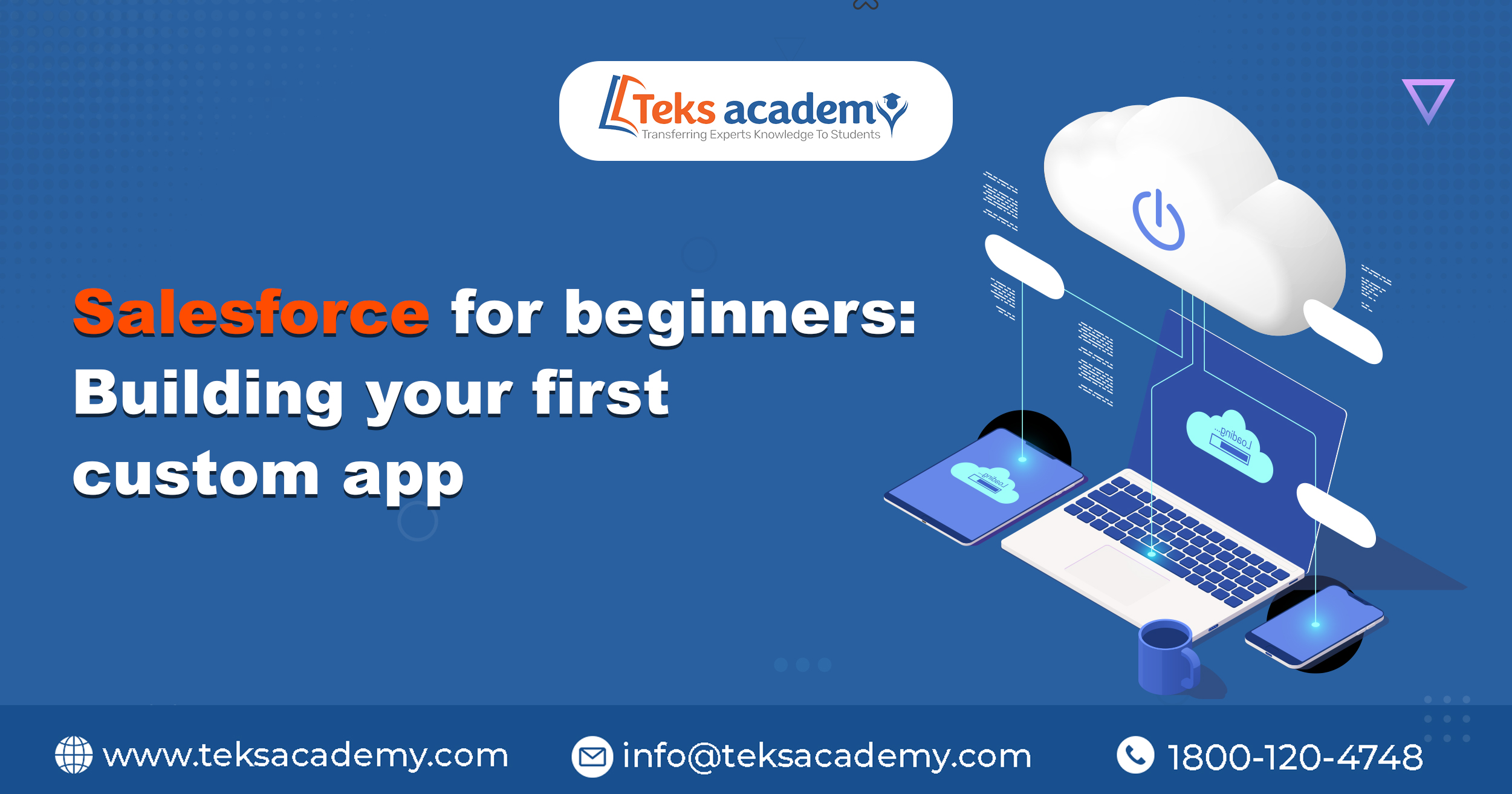

Are you a student or a beginner interested in exploring Salesforce? If yes, you should have heard about the terms Salesforce Management, Service Cloud, and CRM Salesforce during your learning journey. But what exactly is Salesforce, and how to leverage it to build an excellent custom app? Don’t worry, we’ve got you covered!
Salesforce is not a very technical word in the IT world. Every beginner and learner is aware of Salesforce. It is a revolutionary customer management system (CRM) that helps businesses operate and engage with their customers effectively. With the help of Salesforce management, organizations can efficiently manage sales pipelines, marketing campaigns, and customer support.
To know more about Salesforce, read our previous blog:- Salesforce Opportunities: A Comprehensive Guide for Beginners.
This blog will take you through the basics of Salesforce, and a step-by-step guide to creating your very own custom app. Without any delay, let’s start.
It offers various advantages for students and beginners that help them showcase their skills in the job market.
It provides an intuitive and user-friendly application, making it easier for beginners to navigate and work with it.
With Salesforce being cloud-based, maintenance and installation are easy, which helps to focus on app development.
There are thousands of Salesforce experts available in the industry. Joining a massive community of Salesforce developers and experts helps beginners get more clarity about their doubts and challenges.
It allows you to build custom applications that are specially developed for specific business needs, enabling you to create unique solutions.
Learning Salesforce opens many opportunities in the world of CRM and cloud computing.
The Salesforce service cloud is one of the company’s most important offerings for businesses. It is designed to provide businesses with excellent customer service and support. Service Cloud enables beginners and experts to manage customer inquiries, track cases, and provide clear-cut solutions.

To create an application that is perfect for managing customer data and other businesses, you must have a clear idea of the application’s basics. We’ll take you through the step-by-step process.
If you have not signed up for a Salesforce Developer account, this allows you to create and test applications in a dedicated environment without affecting your protected data.
Clearly define the purpose of the application and the functionality you want to incorporate.
For example, you should use the app for contact management and task tracking.
Data is organized into objects in Salesforce. Determine the objects that your application requires and define the relationship between those data. For instance, a basic app might need contacts and tasks, which are objects that have a one-to-many relationship between them.
Depending on your data model, create new objects and fields. You can choose the type of data, how it relates to other data, and the rules to validate each area.
Use process automation while developing the application with the help of workflows and validation rules. Workflow helps to streamline tasks, and validation rules provide data accuracy and consistency.
The Lightning app builder is a part of Salesforce and is a drag-and-drop interface that helps create the interface of the app without writing any code. You can customize the structure, parts, and navigation according to your needs.
Apex is a programming language that is very unique to Salesforce. You can use it to add custom logic to your application if you need advanced features. Apex is the right solution. You can’t make advanced features with point-and-click tools.
Perform thorough testing of your app to ensure that all the features and functions operate as expected. Make use of the sample data to recreate the real-world settings, find any problems, and resolve them with the inputs.
Security is of utmost importance when building apps that handle sensitive data. Utilize Salesforce’s built-in security features, such as profiles, roles, and permission sets, to control access and safeguard data integrity.
Once you have satisfied yourself with your app performance, launch it in the Salesforce production environment. Now you have created your own running application.
App development doesn’t end with deployment. Gather user feedback and monitor app usage to identify areas for improvement. Regularly update and enhance your app to provide a better user experience and adapt to changing business needs.
Congratulations! You have successfully learned about building applications on Salesforce. It has a wide range of capabilities, which you will start to explore in the long run. It is a dynamic platform, and there is always something new to learn. If you want to get deeper into the Service Cloud or Salesforce features, there are many opportunities available. Start learning, implementing, and learning from errors and mistakes. You will be an expert in no time.
